Departure Date: May 17 - 24, 2025
Compiled By: Kevin Burke
Trip Leaders: Kevin Burke
Toll Free: 800.328.8368
Phone: 512.328.5221
North Carolina: From the Swamp to the Gulf Stream 5/17/2025-5/24/2025

After a three-year hiatus, we have resurrected our North Carolina: From the Swamp to the Gulf Stream tour. We had a blast! The coast of North Carolina is a gem of a place to seek out wildlife. The barrier island chain known as the Outer Banks serves many purposes. It is a protector; its mere existence stops storm surge from pummeling the mainland. It is a safe haven for nesting birds, with its miles of protected beaches and dunes. Species such as Piping Plover, Least Tern, and American Oystercatcher all use this area to raise their young. It also serves as a nursery for countless aquatic animals. The bodies of water known as sounds provide shelter from the harsh ocean and help many fish species grow until they are able to survive in the open ocean. Maritime forests and fresh water swamps teem with life. We explored all these habitats and more on our eight-day tour of Coastal North Carolina, all while enjoying the fresh local seafood of the region.
Our tour started in Wilmington, a fast-growing city nestled on the banks of the Cape Fear River. We enjoyed riverside dining downtown to get acquainted and talk about our upcoming adventure. On the first full morning we birded the Orton Pond area. An early rise was necessary to try for our first major target of the trip, the Red-cockaded Woodpecker, a threatened species endemic to the United States. They can also be tricky to see. They emerge from their nest holes in the Longleaf Pines and spend only a few minutes here before they are off to feed far away for the day. Timing is critical. Luckily, we were just in time and had splendid views of this magnificent woodpecker. What a start! If that weren't enough, we had point-blank views of Prothonotary Warbler, or the Golden Swamp Warbler as it used to be known. Northern Bobwhite are abundant here but proved to be hard to see. We heard no less than fifteen of these little quail. The highlights were many here, and we did get great looks at another big target for the trip, the Bachman's Sparrow. A bonus was seeing a pair of the ever-increasing Black-bellied Whistling-Ducks. This species is moving into North Carolina and will surely be seen on future tours.
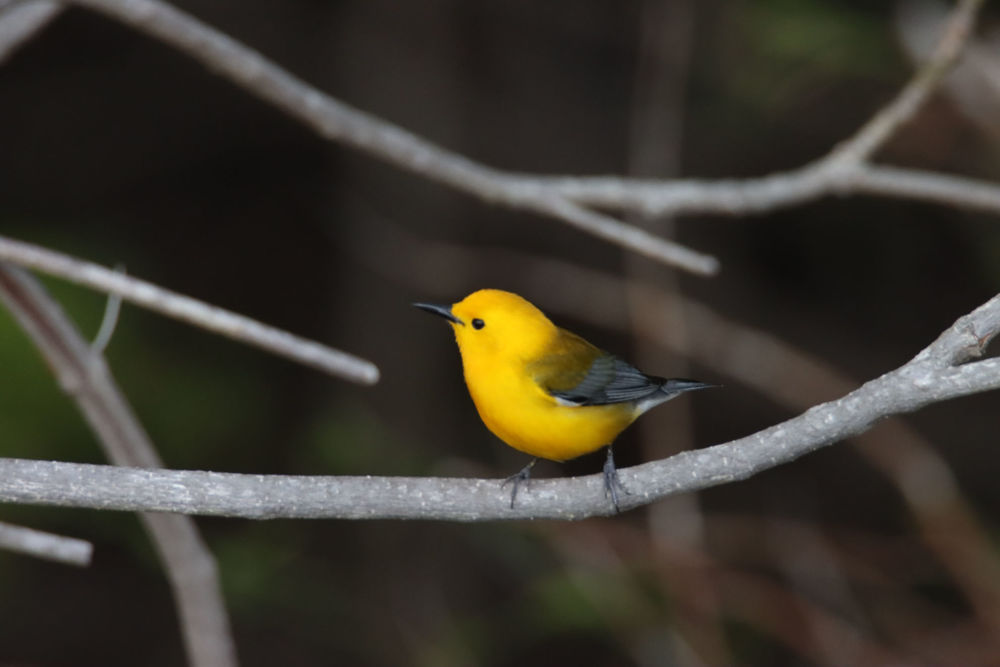
Prothonotary Warbler © Kevin Burke
A big first day indeed. We had not even had lunch yet. A pre-lunch stop at the beautiful Arlie Gardens in Wilmington provided great looks at Painted Bunting. This bird was another big target for the trip, and it made us work for it! We finally had great views as we were leaving for lunch. This was a travel day, so we had to make tracks up to Morehead City for the night. On the way we visited the north end of Topsail Island, a barrier island located a little north of Wilmington. Here the New River dumps into the ocean. The tidal flats can be great for shorebirds, such as the Whimbrel, Ruddy Turnstone, and Black-bellied Plovers we were able to see there. On to Morehead City for another waterfront dinner. It was a big first day!
The next morning we rose and visited Fort Macon State Park. We wandered the beach and took in the ocean views. A couple of late Savannah Sparrows flitted around the beach grass. A washed up Portuguese Man o' War was a neat find. Next, we headed to the little community of Beaufort. I thought it would be fun to take the water taxi out to Shackleford Banks, an island a couple of miles offshore that has had a population of wild horses brought over by the Spanish. The island is awesome for shorebirds, and we got to see one of our main targets, the Wilson's Plover, with little cotton ball chicks. An American Oystercatcher sitting on a nest was also a highlight along with several wild horses. The afternoon was spent in the Longleaf Pine forests that make up part of the Croatan National Forest. Summer Tanagers, Prothonotary Warblers, and Brown-headed Nuthatches were common here. A cooperative Swainson's Warbler was a treat. We had another fleeting glimpse of Red-cockaded Woodpecker and a Mississippi Kite. An optional night excursion to Cedar Island National Wildlife Refuge was a trip highlight. I have never seen so many Seaside Sparrows in my entire life. Clapper and Virginia rails welcomed us to the area. As the sun set over the vast marsh, we were able to hear a Black Rail, and some even got to see it briefly as it popped up and went straight back down. We ended by heading to a close by stand of woods and were surrounded by Chuck-will's-widows. Another big day!
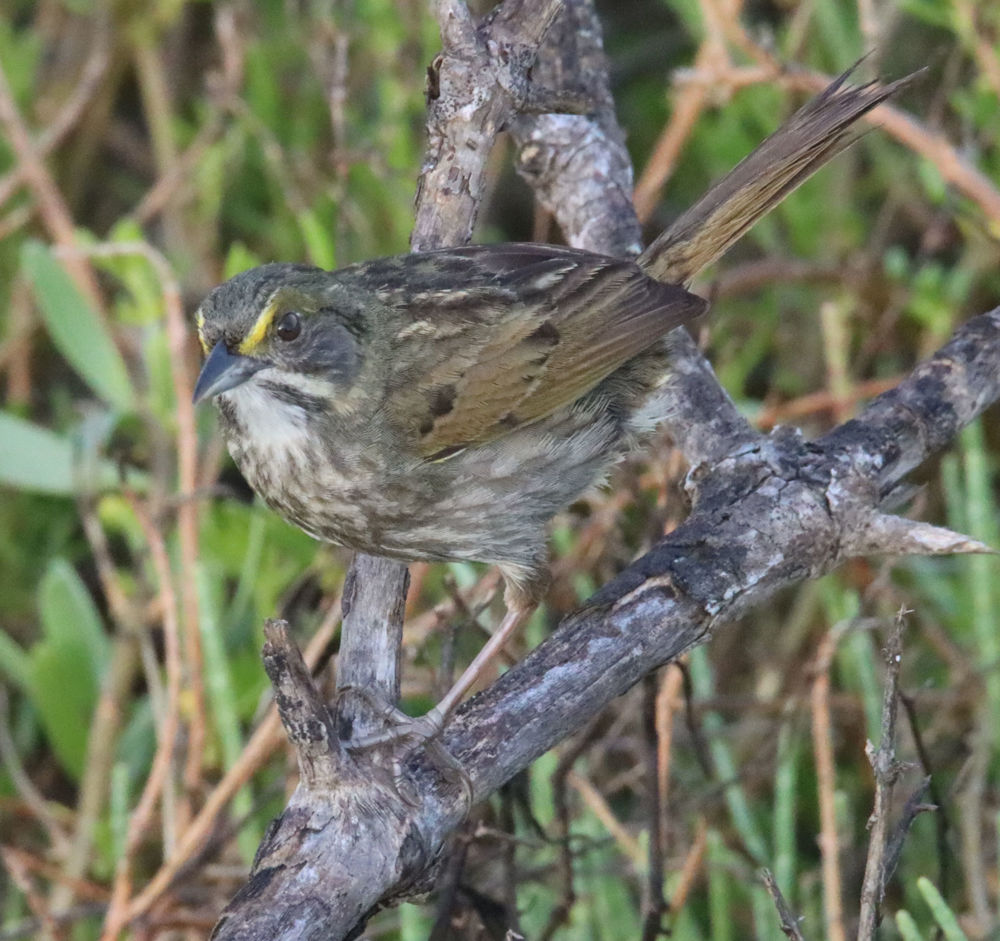
Seaside Sparrow © Kevin Burke
We had a lot of ground to cover on day three, so we started early and made our way to the Cedar Island Ferry terminal. On the way we stopped again at Cedar Island National Wildlife Refuge. Glossy Ibis, Least Bittern, and Black-necked Stilts were all seen well. Our destination for the day was Hatteras, a small community at the end of a long road that extends down from the cities of Kitty Hawk and Nags Head. But, before we could get there, we had to take two ferries. The first was from Cedar Island to Ocracoke Island, a two and a half hour ferry ride through Pamlico Sound. We landed on the remote island of Ocracoke and had lunch in the small village there. Some light birding there provided great looks at Short-billed Dowitcher, Eastern Wood-Pewee, and Sanderling. Another boat awaited us for an hourlong ferry ride to Hatteras. We made it, checked into our hotel, and had an early dinner. The next two days we had plans to go out with Brian Patteson on the Stormy Petrel II for our pelagic trips. We needed to rest up!
The seas didn't agree with us today. The wind had picked up, and the conditions were unsafe to sail. I guess that is why we book two trips. It was a great opportunity to see some other highlights of the Outer Banks. Rain was intermittent today, so we got in what birding we could. The locally famous Salt Pond in Cape Hatteras National Seashore turned up Sandwich Terns, American Avocet, and Black Skimmers. It is kind of a hike to get there, and we didn't want to get poured on, so we headed back early and made a couple of short stops on our way north up the islands. Pea Island National Wildlife Refuge is a must see. There had been abundant rain, so the parking lot was a little flooded, which made getting into the gift shop tricky. We got to visit other scenic places on the Outer Banks today, such as Bodie Island Lighthouse, Jenette's Pier, and Buxton Woods. The Pea Island North Pond Photo Blind proved the best birding of the day with Red Knot and Gull-billed Tern as the highlights. We finished up the day with fingers crossed that we would be able to go out on the pelagic in the morning.
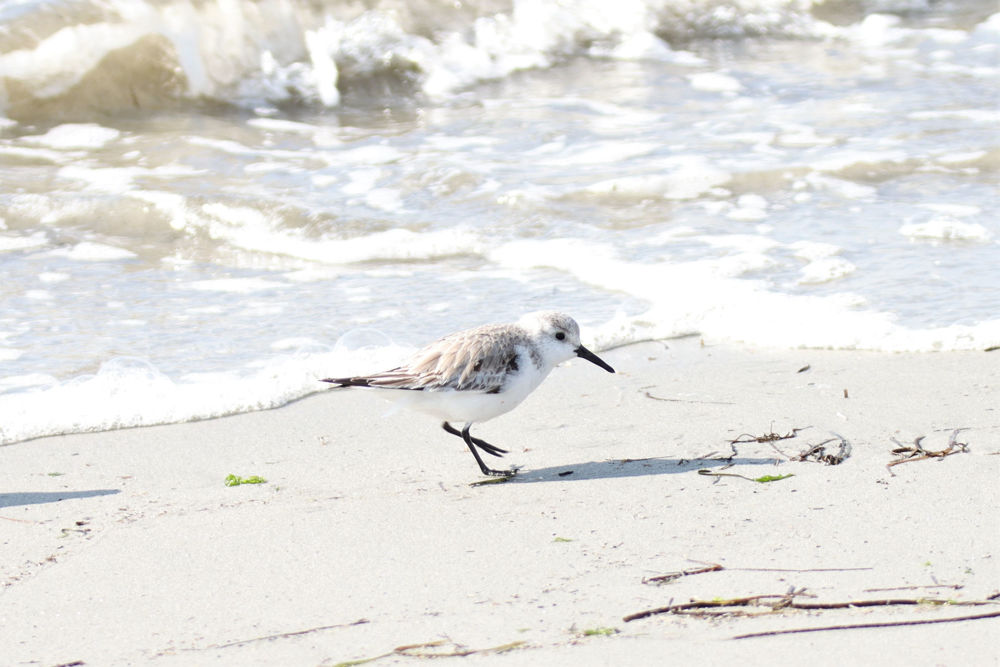
Sanderling © Kevin Burke
The seas calmed, a bit, for us to be able to make it out on the pelagic trip today! Everyone was relieved and excited for our trip. The boat departed at 5:00 AM to be able to get out to the Gulf Stream as early as possible. We motored quickly among somewhat choppy seas. We started to see some of our targets before the Gulf Stream. The first Black-capped Petrels showed up. Everyone was really excited to see this big target of the trip. A few Cory's Shearwaters were also seen. Once we made it out to the Gulf Stream we started to see more and more Black-capped Petrels. The first Wilson's Storm-Petrels began to arrive near the boat. The crew of the boat put out chum, or a mix of fish parts and other interesting items, to attract the birds in close. Sargasso Shearwaters also began to come in. It wasn't too long before someone yelled, "Bermuda Petrel!" This is a mega-rarity for the United States and shows up only a few times per year. We ended up seeing four individuals. To put that in perspective, there are around three hundred and thirty known individuals in the world. That means we got to see over one percent of the total world population! Awesome! We were overjoyed! Band-rumped Storm-Petrel, Manx Shearwater, and Bridled Tern were other highlights of the day. We motored back to shore with lifers for everyone in the group and smiles on our faces.
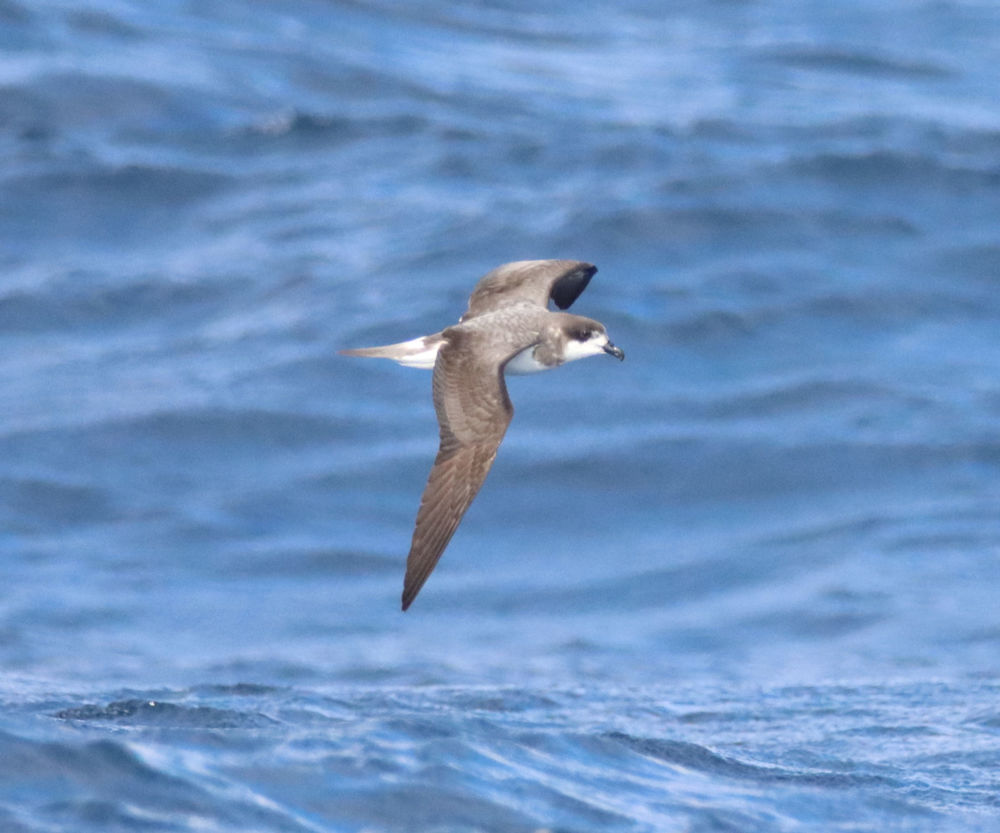
Bermuda Petrel © Kevin Burke
Today was our last full day. We had to make our way up to Norfolk for morning departures. There was still a lot to see. A morning stop at the Old Coast Guard Station on Pea Island National Wildlife Refuge produced Piping Plover and a nice flock of breeding plumaged Red Knots. It was nice to see these birds so well as they foraged in the surf. Our next stop was Fort Raleigh National Historic Park, the site of the first attempted permanent settlement by the English in the New World. So much history here as we walked through the "Lost Colony." Also some good birding. We had awesome looks at Boat-tailed Grackle, Brown-headed Nuthatch, and Great Crested Flycatcher. A picnic lunch in Duck, NC followed. You can't come on a birding trip to the Outer Banks and not go to Duck! One last stop at the Great Dismal Swamp State Park got us a few new species for our trip, including Yellow-throated Warbler, Indigo Bunting, and Acadian Flycatcher. A nice dinner in downtown Norfolk, VA rounded out the trip.
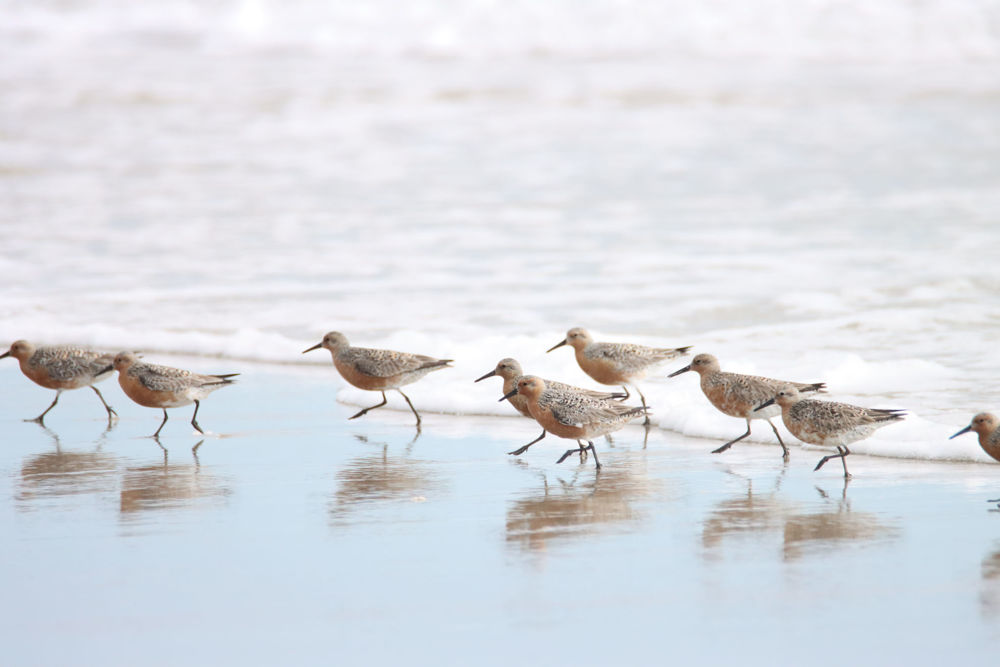
Red Knots © Kevin Burke
This was a great tour. The food, the birding, the company, and the ocean views were all amazing. We realized late in the trip that this is also a good tour for U.S. mainland endemics. We bagged six mainland endemics on the tour including Boat-tailed Grackle, Fish Crow, Bachman's Sparrow, Seaside Sparrow, Carolina Chickadee, and Red-cockaded Woodpecker. What a cool bonus on top of all the other wonderful sightings.
A complete list of the birds recorded on our tour can be found at: ebird.org/tripreport/369545
Read the description for the next departure of this tour.
View Kevin Burke's upcoming tour schedule.
ITINERARY:
Day 1: May 17th, 2025--Arrival
Day 2: May 18th, 2025--Orton Pond, Arlie Gardens, New River Inlet
Day 3: May 19th, 2025--Fort Macon State Park, Shackleford Banks, Croatan National Forest, Cedar Island National Wildlife Refuge
Day 4: May 20th, 2025--Cedar Island National Wildlife Refuge, Beacon Island, Ocracoke Island
Day 5: May 21st, 2025--Cape Hatteras National Seashore Salt Pond, Pea Island, Bodie Island Lighthouse
Day 6: May 22nd, 2025--Hatteras Pelagic trip
Day 7: May 23rd, 2025--Old Coast Guard Station Pea Island, Fort Raleigh National Historic Park, Duck Boardwalk, Great Dismal Swamp State Park

